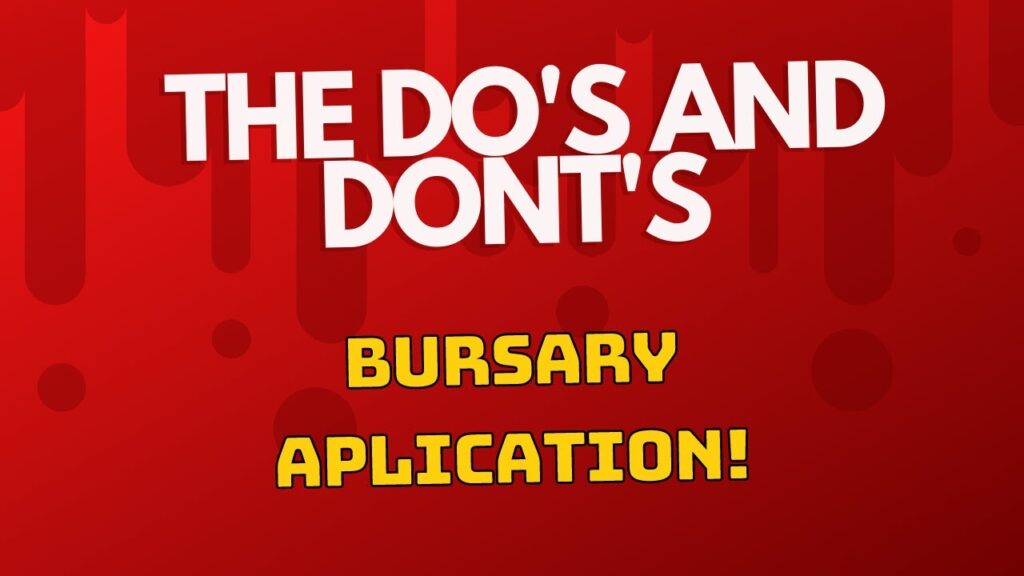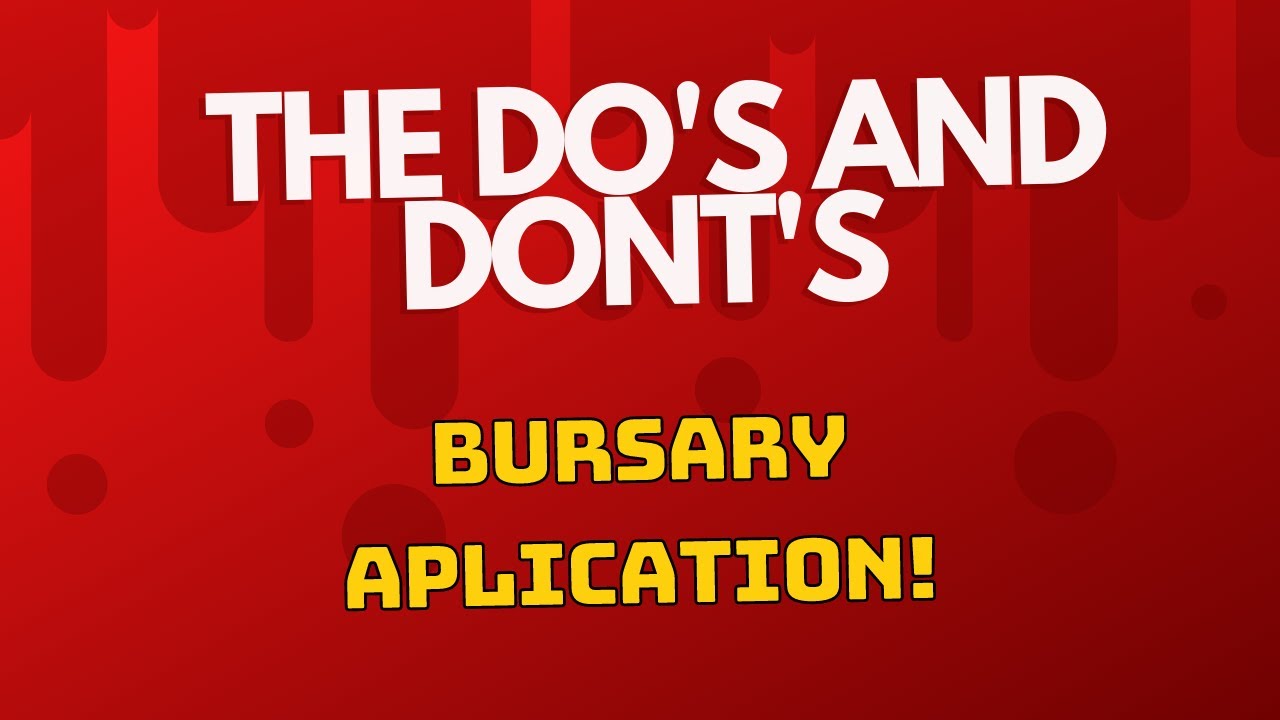Mastering the Bursary Application Letter: A Step-by-Step Guide
Applying for bursaries is an essential step for many students seeking financial assistance for their studies. With tuition fees rising and the costs of textbooks, accommodation, and other expenses, a bursary can make the difference in being able to pursue one’s academic goals.
However, drafting a compelling bursary application letter is key to standing out from the competition and securing funding. This comprehensive guide takes you through the entire bursary application process, from understanding eligibility criteria to crafting a persuasive personal statement.
Follow these tips to master the art of the bursary application letter.

ALSO SEE:
Learn How to Secure a Full Bursary in South Africa – Step-by-Step Guide
Crafting a Compelling Bursary Motivational Letter – Tips and Examples
How Much Do Bursaries Pay In South Africa?
Bursaries for 2024 Undergraduate South Africa – Funding Your Education
Skills To Put On A Basic Resume (According to Experts)
Understanding the Bursary Application Process
Before drafting your letter, research the specific bursary requirements and criteria thoroughly.
Eligibility Criteria
Academic requirements vary, but often include a minimum GPA and full-time enrollment status. Financial need is a universal requirement, with bursaries intended for economically disadvantaged students.
Researching Available Bursaries
Target both institutional bursaries from your university, as well as external scholarships from charitable foundations and providers. Gather application forms and note all deadlines.
Crafting a Compelling Personal Statement
The personal statement is your opportunity to highlight your achievements, passions, and career ambitions.
Showcasing Academic Achievements
Provide concrete examples of academic success, such as GPA, course grades, awards, and scholarships. Quantify achievements.
Highlighting Extracurricular Activities
Discuss extracurricular involvement on campus or in the community that demonstrates leadership, collaboration, and other skills.
Expressing Career Goals and Ambitions
Explain your career plans and how the bursary would enable you to pursue further education to achieve those goals.
Structuring the Bursary Application Letter
Follow the standard letter format with tailored content.
Introduction
Briefly introduce yourself, your year of study, and the bursary you are applying for.
Body
Use the personal statement to highlight your qualifications, achievements, and financial need. Provide specific examples.
Conclusion
Close by thanking the bursary committee and expressing appreciation for consideration.
Writing Style and Tone
Write professionally using formal language. Adopt a sincere tone and show passion for your academic and career goals.
Emphasizing Financial Need
Provide accurate details about income, expenses, and other financial realities that necessitate bursary funding. Explain any special circumstances causing hardship.
Showcasing Leadership and Initiative
Share meaningful examples of when you demonstrated leadership, initiative, and perseverance in your academic or personal life.
Including Letters of Recommendation
Letters from professors or employers emphasize your achievements and character. Follow guidelines and give recommenders plenty of notice.
Polishing Your Bursary Application Letter
Proofread thoroughly and ask mentors or advisors to review your letter draft. Revise accordingly.
Common Pitfalls to Avoid
Steer clear of these mistakes:
- Generic statements lacking specific examples
- Overemphasis on financial hardship without showcasing achievements
- Failing to tailor your letter to each bursary’s requirements
Submission Guidelines
Follow all formatting and submission instructions precisely. Submit online, by mail, or in-person by the exact deadline.
Follow-Up Strategies
Send thank you notes to bursary committees after submitting. Politely follow up on application status if you have not heard back.
With diligent planning, stellar content, and persistent follow-up, your bursary application letter can help fund your academic dreams. Use this guide to craft an outstanding letter that secures the essential financial support you need to succeed.
Successful Bursary Application Case Studies
Reviewing real-life examples of winning bursary application letters can provide invaluable insights.
Real-Life Examples of Winning Letters
- Discuss a sample letter that impressed with its articulate description of the applicant’s academic achievements, leadership activities, and career goals.
- Analyze a letter that stood out for its compelling account of the applicant’s financial challenges and how the bursary would help them complete their education.
Lessons Learned from Successful Applicants
- Quantifying achievements provides impact e.g. GPA of 3.8/4.0 over 4 years
- Weaving in personal stories and anecdotes makes the letter memorable.
- Tailoring content specifically to each bursary provider demonstrates effort.
Summary of Key Points
Here are the core elements of a standout bursary application letter:
- Conduct extensive research on all requirements for the bursary
- Craft a focused personal statement highlighting qualifications, passion, and need
- Adopt a professional tone and provide detailed, concrete examples
- Follow instructions precisely and proofread extensively
- Supplement with strong recommendation letters
- Persist through the process and utilize follow-up strategies
Remember to customize your letter for each bursary. A targeted, high-quality letter can help fund your dreams.
Frequently Asked Questions (FAQs)
What should be included in the introduction?
Briefly introduce yourself, your academic program, year of study, and the name of the bursary you are applying for.
How long should a bursary application letter be?
Aim for 1-1.5 pages in length. Follow any explicit length requirements provided. Quality content is more important than length.
Can I apply for multiple bursaries simultaneously?
Yes, you can and should apply to as many appropriate bursaries as possible. Just ensure you tailor each letter accordingly.
Conclusion
Securing bursary funding takes time and dedication. With guidance on the key elements of successful applications, you can master the art of writing compelling, polished bursary application letters that make you stand out. Use this step-by-step guide to apply strategic effort, highlight your achievements, and convey your financial need. With persistence and continuous refinement, your letter can open doors to essential funding for your academic journey.

